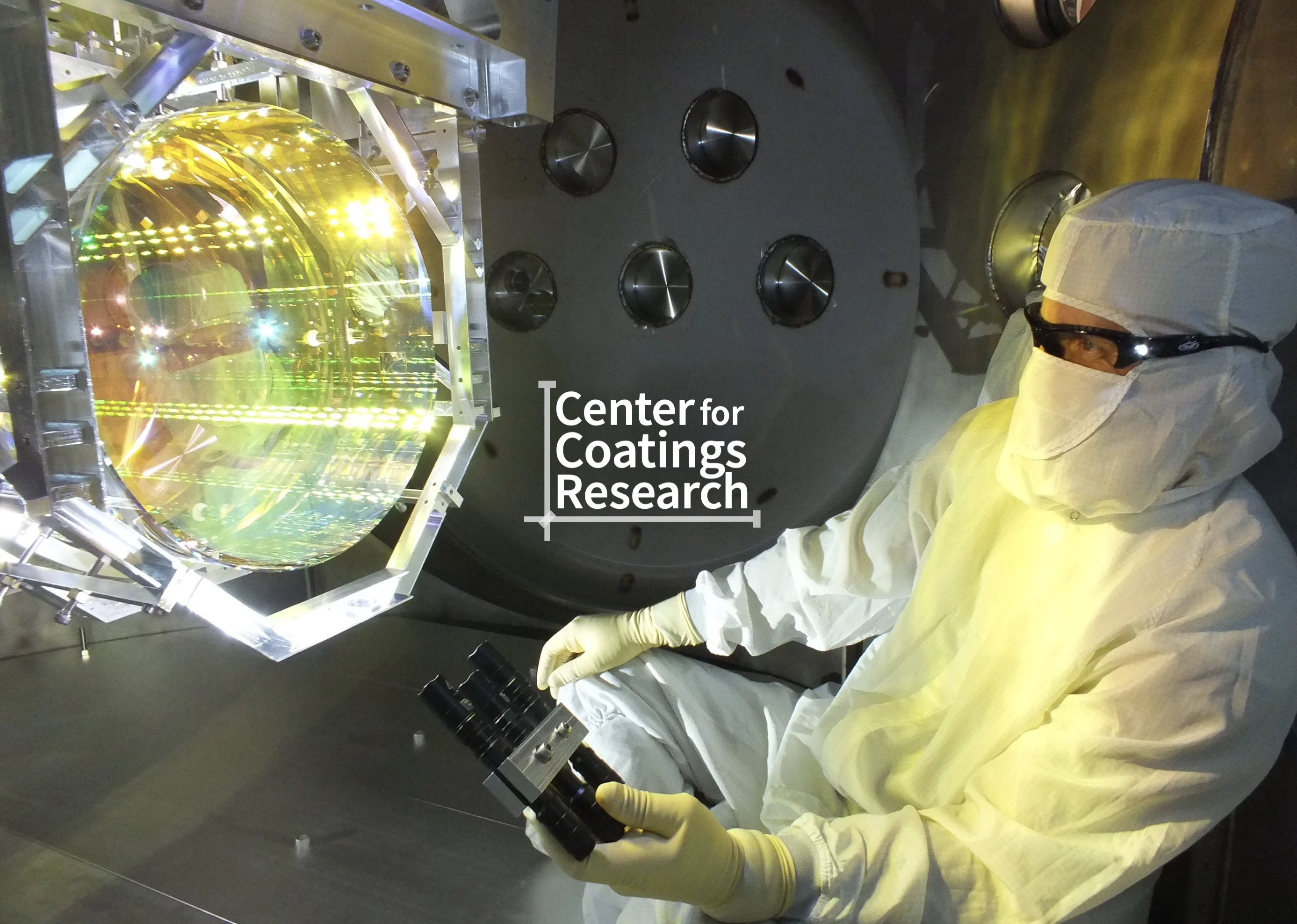The Center for Coatings Research (CCR) seeks to extend the reach of the next generation of gravitational wave detectors by addressing the dominant noise source limiting their performance, thermal noise in the interferometer mirrors.
This noise reduces the number of observable gravitational wave signals from astronomical sources. It arises from thermal excitation of the vibrational modes of the mirrors in the LIGO detector optics. The effect of these excitations is reduced as the mechanical quality factor (Q) of the mirrors is increased. Since the Q of the mirrors is limited by the reflective coatings deposited on their surfaces, lower noise requires development of better coatings.
The CCR combines groups from eight institutions in the US working on computational modeling of amorphous materials, deposition of coatings, and characterization of their atomic structure and macroscopic properties. These components are often performed by three diverse communities that work in relative isolation from each other. The strength of the CCR and its promise of accelerating discoveries arises from close integration of these three communities focused on a unified research goal.
Coating thermal noise is also a limiting factor in the fields of precision timing, quantum information, low noise interferometry, and precision measurements like the search for deviations in the gravitational inverse-square law. Coatings improving on the state of the art in mechanical and optical properties developed under this program would be applicable to these communities as well.
The current institutions and PIs in the CCR are:
- Stanford University, Martin Fejer (Lead)
- American University, Gregory Harry
- California State University Los Angeles, Marina Mondin
- Colorado State University, Carmen Menoni
- Embry-Riddle Aeronautical University, Andri Gretarsson
- Hobart and William Smith Colleges, Steven Penn
- Syracuse University, Stefan Ballmer
- University of California, Berkeley, Frances Hellman
- University of Florida, Hai-Ping Cheng
